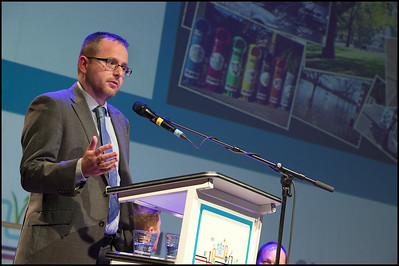Jam session
Also known as: Open mic
A jam session, or open mic, much like the musical and poetic counterpart from which it takes its name, is an open opportunity for people working in a given domain to meet with the desire to collaborate, but without a clear vision for doing so. The session can be virtual or in-person, and its aim is to move from cacophony to harmony, gradually bringing participants into a shared rhythm.
The meeting is open to anyone who wants to pitch proposals for collaborative work with a clear scope and objective. The idea is to foster initiatives driven by the network and facilitate synergies between members, digitally reproducing the element of serendipity usually missing from online meetings.
Method
- Determine duration and format: Decide whether the session will be virtual or in-person and set the length for the meeting.
- Send open invitation:
- Craft an open invitation to potential participants, clearly indicating the session’s purpose.
- Include any initial ideas or topics that might be addressed to stimulate interest.
- Set the session structure:
- Begin with an introductory segment, setting the tone and explaining the guidelines.
- Allocate specific time slots for participants to pitch their ideas. This should be standardised (e.g. one minute) for consistency.
- Specify the maximum number of visual aids (e.g. slides) a participant can use during their pitch.
- Incorporate a short Q&A segment after each pitch to allow immediate feedback and clarification.
- Include an interactive component (e.g. live polling) for participants to show interest in collaborating on pitched ideas.
- Offer those interested in joining an initiative a brief segment to share their motivation.
- Feedback and next steps:
- Gather immediate feedback on pitched ideas using tools or live interactions.
- Determine which ideas move forward based on interest, feasibility, and potential impact.
- Match participants interested in collaborating on particular projects, fostering partnerships.
- Establish guidelines for project advancement:
- Define criteria for how many partners should be involved in a particular project. These can be variable depending on the nature of the idea.

Examples of application
Eurocities’ Digital Forum Open Mic Session
- Context: The pandemic reduced personal contacts and opportunities for networking, prompting the need for alternative methods to foster collaboration and serendipity.
- Format and duration:
- The session was virtual, given the pandemic context.
- Each session was an hour long.
- Invitation and participation:
- Specific details of some pitches were provided in the invitation to generate interest.
- Only cities interested in pitching applied for participation, making the session speaker-centric.
- Session structure:
- Introduction followed by individual pitches.
- Each pitch was limited to one minute with a maximum of two slides.
- A two-minute Q&A followed each pitch.
- Slido was used for live polling, allowing cities to express interest in pitched projects.
- Outcome and further development:
- Projects were either given a ‘green light’ to proceed or a ‘red light’ indicating they wouldn’t move forward.
- Depending on the project, a variable number of partner cities were required for the project to advance.
- Nature and atmosphere:
- The session was designed to be informal, mirroring the feel of an open mic session in a bar.
- Emphasis was placed on being proactive and not just questioning. The approach was about proposing tangible ideas for collaboration.
- The environment was friendly, not requiring extensive preparation and fostering genuine collaboration.
- Examples of topics covered: Taskforce for Artificial Intelligence and possibly cybersecurity were among the ideas pitched during these sessions.
Top tips
Clear communication: Ensure ideas are conveyed succinctly and clearly, respecting the time limits.
Be prepared: Have a well-prepared pitch, with clear objectives and scopes to garner interest.
Engage actively: Actively participate in Q&A sessions to clarify any ambiguities and to understand the projects better.
Express interests clearly: Be explicit about the interests and motivations to join a particular project.
Stay open: Keep an open mind to diverse ideas and be willing to collaborate on various projects.
Pros & cons
Pros:
- Diversity of ideas: Jam sessions bring a plethora of ideas, enriching the overall brainstorming process.
- Network building: Provides a platform for creating synergies and network building among members.
- Flexibility: The open format allows for flexibility and creativity in discussions.
- Quick engagement: The structured yet concise format ensures quick and immediate engagement.
Cons
- Lack of depth: Time constraints may lead to a lack of depth in discussions and understanding.
- Varying commitment: The open nature may lead to varying levels of commitment and seriousness among participants.
- Potential chaos: Without proper moderation, the multitude of ideas pitched can lead to chaos and a lack of focus.
Outcomes and impact
The primary outcome of jam sessions is the formation of new, innovative projects with diverse inputs and collaboration from different participants. These sessions lead to the birth of focused groups with clear objectives and scopes, driving initiatives forward.
Impact
Pitfalls
- Lack of preparation: Insufficient preparation can lead to ineffective pitches and unclear project scopes.
- Ineffective moderation: Without efficient moderation, sessions may devolve into chaos, with overlapping ideas and lack of structure.
- Mismatch of expectations: Divergent expectations among participants may lead to disagreements and hinder collaborative efforts.
- Limited time: The brief nature of pitches may not allow for a thorough understanding of the projects.
Links


